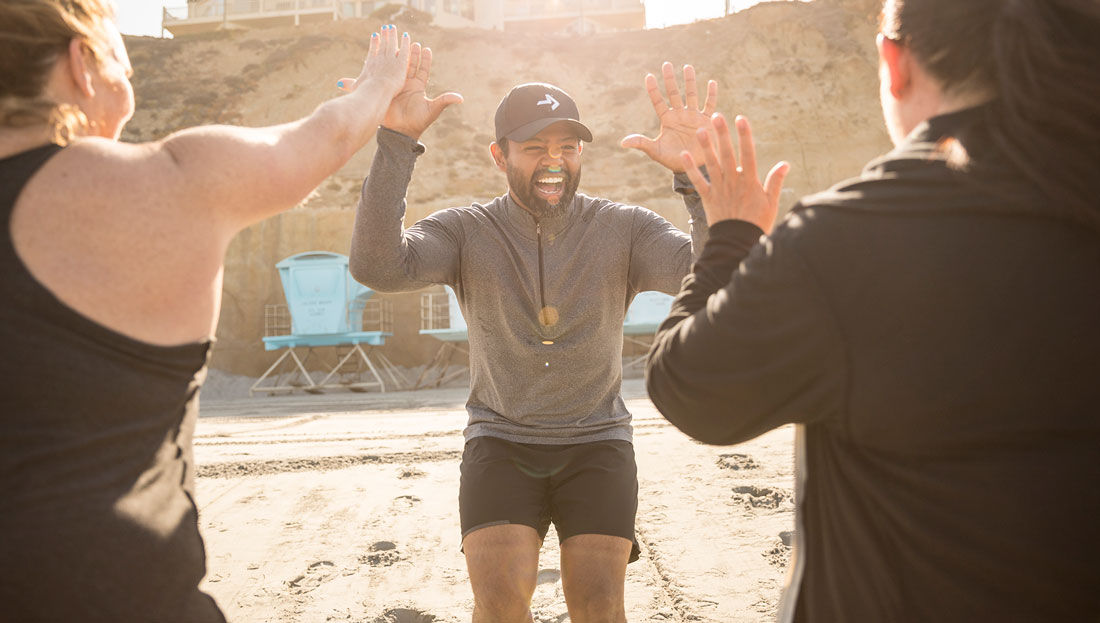
Behavior change is a deceptively complicated topic.
If it were easy for people to alter their habits, health coaches and exercise professionals might be out of a job pretty quickly. The complexity comes not only from the fact that every individual has a unique set of stressors, goals, desires and obstacles, but also from constant shifts in both the interior and exterior influences on people’s behavior.
This article describes three of the most commonly cited behavior-change theories and offers practical strategies that can be used with clients to positively influence healthy behavior. An important note about these theories: When you were preparing for your certification exam you may have viewed them simply as concepts you had to memorize before exam day. In reality, as you will soon find, they actually offer practical strategies that can be used to empower your clients to pursue their personal goals.
According to Sabrena Jo, ACE’s Director of Science and Research and ACE Certified Group Fitness Instructor, Personal Trainer and Health Coach, most people get involved with becoming an exercise professional because they are drawn to exercise and fitness and want to teach it to others who are just as passionate. The trouble is, many of your clients will approach exercise from a very different perspective.
“While exercise pros have their own reasons for being active,” says Jo, “they need to be aware that there is scientific research behind the concept of behavior change, and they need to develop the ability to empathize with people who may not be naturally inclined to pursue physical activity.”
Let’s take a look at these models and how you can turn theories into action in your work with clients.
Health Belief Model
The health belief model states that people’s ideas and underlying emotions about illnesses, prevention and treatments may influence health behaviors and decisions about changing (or not changing) those health behaviors. Because this model focuses on a person’s decision making, it is most applicable early on, when clients are still weighing the pros and cons of making behavior changes.
According to this theory, four principal variables influence a person’s decision to change (Figure 1):
- Perceived susceptibility to an illness
- Perceived seriousness of that illness
- Perceived benefits changing the health-related behavior
- Perceived barriers to changing the health-related behavior

Figure 1
Turning Theory Into Action
Consider a client who comes to you after being diagnosed with prediabetes, which means they are on a path to type 2 diabetes, but a path that can be rerouted through appropriate behavior change. Your goal in this scenario is to engage the client to build rapport, determine an initial behavior on which to focus, and evoke the client’s motivation to change. Through conversation, you can clarify the client’s understanding of the diagnosis (susceptibility) and of the health risks associated with prediabetes (seriousness). Adding relevant information and correcting any misunderstandings, with your client’s permission, is an appropriate approach.
You can then discuss with the client the behavior changes that suit their lifestyle and overall goals as well as help counter the effects of prediabetes (benefits). Also, it is essential to explore any perceived obstacles that might stand in the way (barriers). By discussing potential roadblocks and collaborating on strategies to address them before they show up, you are empowering the client to achieve long-term success.
Self-determination Theory
The self-determination theory states that different types of motivation influence the extent to which a person will seek out new activities and persevere at a given task.
Most people do not like to be told what to do. Instead, they like to feel that they have choices and are making decisions about their behavior based on their own wishes and in a way that aligns with their personal values and goals. Self-determination theory is focused on the use of autonomous motivation, which means that people are doing something because they want to do it. This is in contrast to controlled motivation, which involves people doing something because they feel pressured by outside demands.
For example, a client who joins a dance class because they love the activity and enjoy the social experience is much more likely to stick to that routine over the long haul than someone who walks on the treadmill every day because their doctor told them it would be beneficial to lose some weight.
Very few, if any, adults exercise because they are 100% autonomously motivated. The goal is to work together with clients to move in a positive direction along the continuum from controlled to autonomous motivation. Valuing the expertise of the client and allowing them to decide if and when they are ready to become more active and what activities they may like to do are critically important for respecting the client’s autonomy. Adherence will improve as a client makes decisions according to their own wishes and finds more joy and personal satisfaction from physical activity.
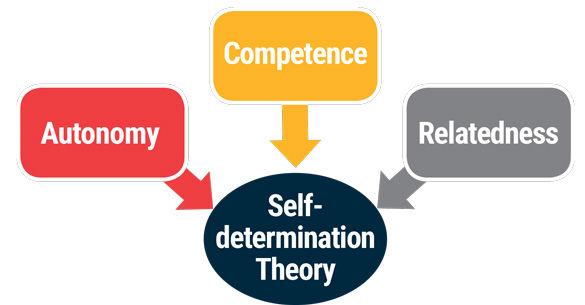
Figure 2
Turning Theory Into Action
Strive to create environments that meet your clients’ basic psychological needs by doing the following (Figure 2):
- Creating opportunities for mastery experiences by offering appropriately challenging exercises and consistent positive feedback—this promotes competence
- Including the client in aspects of goal setting and program design—this promotes autonomy
- Encouraging a sense of camaraderie—this promotes relatedness
Another element of positive environments is that they are “task-involving,” which means they promote individual effort and improvement, everyone is valued and welcomed, and cooperation is fostered among everyone in the setting. This is in contrast to “ego-involving” climates, which highlight the most skilled or fit exercisers in a group and encourage potentially unhealthy rivalries.
People who exercise in task-involving climates report having higher self-esteem, feeling more competent and autonomous, feeling a greater sense of relatedness to others and experiencing more enjoyment.
Part of creating a caring, supportive environment is ensuring that each client has adequate social support. This can come in the form of a reliable exercise partner, an encouraging spouse or group of friends, or exercise programming that includes social elements such as fun contests, partner work or simply having a good time.
Transtheoretical Model of Behavior Change
This model—also known as the stages-of-change model—is perhaps the best-known behavior-change theory. There are four components of this model:
- Stages of change: The five stages of change are precontemplation, contemplation, preparation, action and maintenance (Figure 3). Health coaches and exercise professionals can use various strategies to empower clients to move forward along these five stages, as well as respond effectively when they slide backward along the continuum.
- Processes of change: This element explains the process that people use to progress through the stages. It is important that you are mindful of the fact that each stage transition has a unique set of processes and is based on individual decisions and mental states, including readiness to change and motivation level.
- Self-efficacy: Self-efficacy is defined as the degree to which an individual believes they can successfully perform a given behavior. Remember, self-efficacy is task-specific, so a client may have tremendous self-efficacy when it comes to performing cardiorespiratory exercise each day but have little faith that they can eat more healthfully. The most important thing to know about self-efficacy is that its relationship to behavior change is circular; as a person’s self-efficacy improves, they are more likely to perform a given task, and as they perform that task successfully, their self-efficacy is further improved.
- Decisional balance: The final element of this model involves the evaluation of the pros and cons of adopting or maintaining an activity program. Enabling clients to uncover more pros when it comes to living a healthy lifestyle will help them progress through the stages of change.
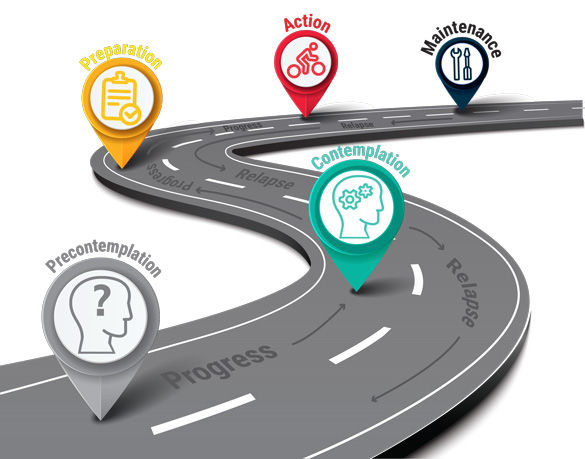
Figure 3
Turning Theory Into Action
You should tailor your approach during every client interaction to that client’s stage of change. For example, a client who is aware that exercise would help them reach their goals but has a limited understanding of how to go about changing (this client is in the contemplation stage) would require a very different approach than a client who has a well-developed ability to cope with lapses in their program and a desire to maintain adherence (this client is in the maintenance stage).
For the first client, you might encourage them to evaluate the pros and cons of making a change and to identify positive outcomes that will come with participation. For the second, you might reevaluate the strategies the client is already using and plan for contingencies within their support system, if needed. The point is, there is no one-size-fits-all approach, so you must be mindful of what strategies best match the needs, desires and readiness to change of each client.
Another practical element of this model is the enhancement of self-efficacy, and past performance experience is perhaps the most important source of self-efficacy. Remember, confidence leads to success, and success leads to confidence, which is why the creation of positive, joyful exercise experiences is so vital, especially early on in a client’s program.
Note: Using the button at the top of this page, ACE Certified Professionals can access an exclusive PDF, which features three steps for turning theory into action. You can help create an environment that supports intrinsic motivation and meets your client’s basic psychological needs by answering the questions on this form.
Real-world Examples
We reached out to two ACE Certified Professionals to ask about real-world examples of when they used a client-centered approach to understand and empower a client whose motivations to be active, eat better or make other lifestyle changes were different from their own or yielded an unexpected outcome. Here are their responses.
 Jen Kates, CHC, Pn2, NASM-CPT, Founder and Coach at Shift Human Performance, ACE Certified Health Coach
Jen Kates, CHC, Pn2, NASM-CPT, Founder and Coach at Shift Human Performance, ACE Certified Health Coach
I once had a client who had high blood pressure and hypercholesterolemia. His goal was to not depend on statins and to avoid being put on blood-pressure medication. So, along with teaming up with his general practitioner, I asked my client to identify some areas on which he’d like to focus for health improvement. He quickly noted that stress related to work expectations, work-related travel and reduced sleep were key areas. I learned that his sleep quality was poor, and he averaged only four to five hours of sleep a night while on the road.
We both agreed that sleep would be an important first area to address and one way to approach it could be through increased physical activity. I asked him what micro-steps he could take to help get in more exercise on the road. One of the ideas we came up with was for him to work out for even just five or 10 minutes in the hotel gym upon arrival. What he found was that once he started working out, he ended up exercising for upwards of 30 to 45 minutes each day while on the road. Within weeks of this micro-step, his sleep habits and quality improved and he shed some excess body fat. Within months, his blood pressure returned to a normal range, as did his lipid levels. What started off with a commitment to perform a five-minute workout ended with a vast difference in his overall health outcome, all by empowering him to make the decision to take the smallest possible step forward.
 Dianne McCaughey, PhD, International Speaker, Author, Consultant, and Award-winning Fitness Specialist, Gold Certified ACE Personal Trainer
Dianne McCaughey, PhD, International Speaker, Author, Consultant, and Award-winning Fitness Specialist, Gold Certified ACE Personal Trainer
I have a client in her mid-70s. She has had six back surgeries, has chronic obstructive pulmonary disease (COPD) and lives in an assisted living facility. I was hired to help her get stronger and develop more functional fitness.
I could sense her hesitation, anxiety and fear about getting started. She was more in the contemplation than the action stage and needed help recognizing her own strengths, weaknesses and insights. With her permission, I provided pertinent educational information and used a nurturing style of communication to help lend powerful facts, insights and support. It is imperative to meet the client where they are, and this process helped to build a solid foundation from which we could grow.
The health belief model became important to help build on the educational material to make it personal and pertinent. All aspects of health were addressed, including physical, mental, emotional, nutritional, social and spiritual. Through engaging conversation, it was revealed that she had a few long-held beliefs that were more myth than fact, which created barriers to success. These self-discoveries allowed the client to understand that there was a simpler method for health improvement that promoted action and adherence.
Through supportive and collaborative open dialogue, the client began to see that she was the only one who could make the change. Through proper progressions and mastery to build self-efficacy, she began to take baby steps toward competence and autonomy.
In Conclusion
An understanding of behavior-change theories can help you personalize exercise programming to meet each client’s motivational needs, preferences, abilities and emotions around physical activity, all of which must be considered when developing an exercise program.
The ACE Mover Method™ and ACE ABC Approach™ were created to help you incorporate a client-centered approach to empower clients to make behavior changes in a way that ties together many of the approaches described above. The use of open-ended questioning, active listening and collaboration will help you take an approach that is tailored to each client that will ultimately drive long-term success. Studying this client-centered approach and strategically implementing it when appropriate during training or coaching sessions will empower clients to make lasting and meaningful lifestyle changes.
Expand Your Knowledge
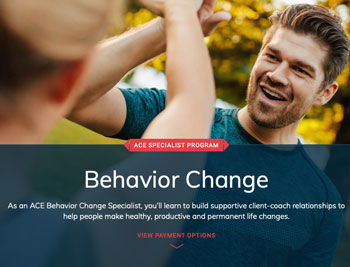
ACE Specialist Program: Behavior Change
The ACE Behavior Change Specialist Program teaches you the key tools to promoting behavior change and creating a foundation for a healthy lifestyle. You will learn how to help clients of all backgrounds recognize counterproductive behaviors and coach them to discover new methods to move more, eat better and make healthier decisions for themselves and their families.
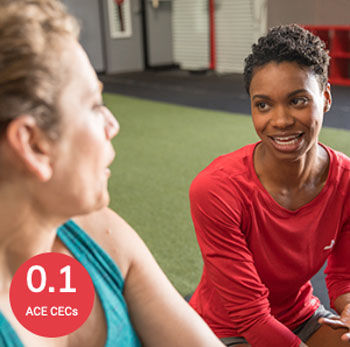
ACE Mover Method: Empowering Clients Through Behavior Change
In this live webinar, Sabrena Jo, ACE Director of Science and Research, and Dennis Sanchez, ACE Health Coach Education and Training Lead, explain how to use the ACE Mover Method and the ACE ABC Approach to better serve your health and fitness clients. Regardless of their stage of change, you will be able to support and guide clients along their behavior-change journey with an actionable, step-by-step process. You will use strategies that will not only help your clients be more successful but will also elevate you as a professional and improve your business.
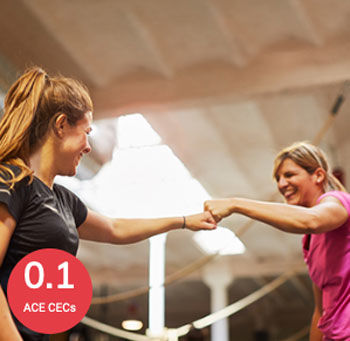
Creating a Motivational Climate for Behavior Change
In this course from ACE Director of Science and Research Sabrena Jo, MS, learn specific strategies for creating the best motivational environment for clients to be successful and achieve their behavior change goals. Using the ACE Mover Method and ACE ABC Approach, you will be equipped to immediately foster a positive motivational climate in your fitness business to help get and keep clients moving.





 by
by 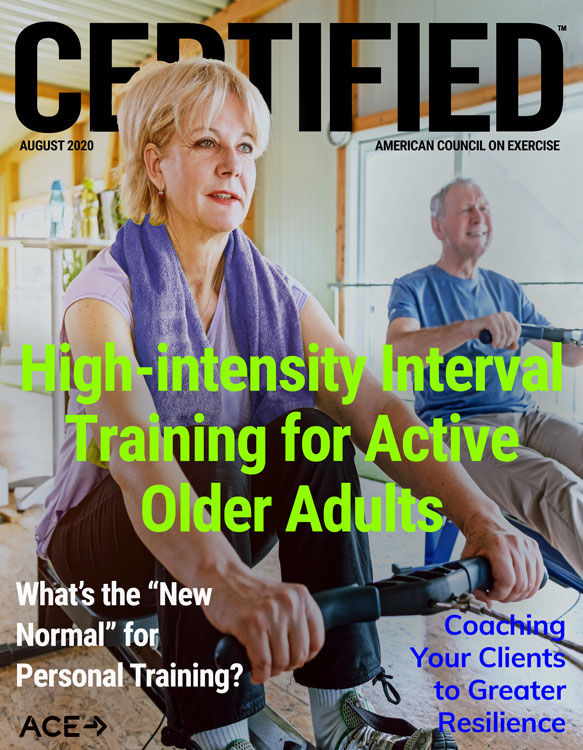




 Jen Kates, CHC, Pn2, NASM-CPT, Founder and Coach at
Jen Kates, CHC, Pn2, NASM-CPT, Founder and Coach at  Dianne McCaughey, PhD,
Dianne McCaughey, PhD, 



